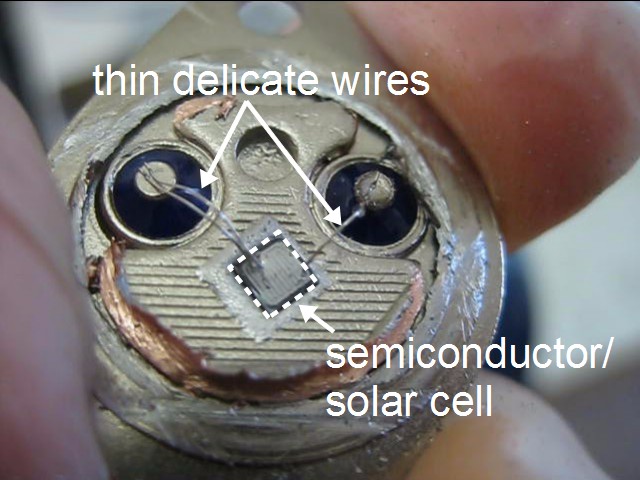In bridge mode the load feels twice as hard as it really is. So the output transistors see twice the current, so they can easily overheat if cooling isn't adequate. What overheats and breaks is the microscopically fine wires inside the transistor case that are connecting the big i/o pins to the actual silicon transistor inside the device case:

A bass drum hit and the resulting current spike create instantaneous heat in the silicon, but it takes time for the heat to move from silicon to device mounting plate to heatsink to air. In that time the high heat can melt that fine hookup wire inside the transistor device. Having bigger heatsink wouldn't matter because it takes a relatively long time for heat to get from silicon to heatsink. The current we're talking about is coming in and out on those tiny hookup wires inside the transistor. For a given volume level, the current through the transistor is double so there is double the amount of heat in the silicon when the amp is run in bridged mode. The fine wires can fail instantly, or they can be weakened over multiple heat events then fail randomly.
The range of voltage, current and heat transfer rate that the transistor can operate safely without rick of thermal failure is called the
Safe Operating Area. Running amp in normal mode there is no risk of exiting the SOA, but running in bridged mode can leave the SOA and risk damage. That's why the min load impedance must be reduced, to maintain operation within SOA.
I think there should more warning about the risks of running bridged, but a warning makes the amp look fragile which would affect sales so the risk seems to be minimized more often than not. Many hifi amps try avoid using a protection relay on the output because it usually uses tungsten contacts which are a poor conductor and can affect SQ, especially after they get pitted from opening and closing under load.
Frank Van Alstine (avahifi) has posted in the past about the benefits and dangers of bridged mono operation. You can search his posts.